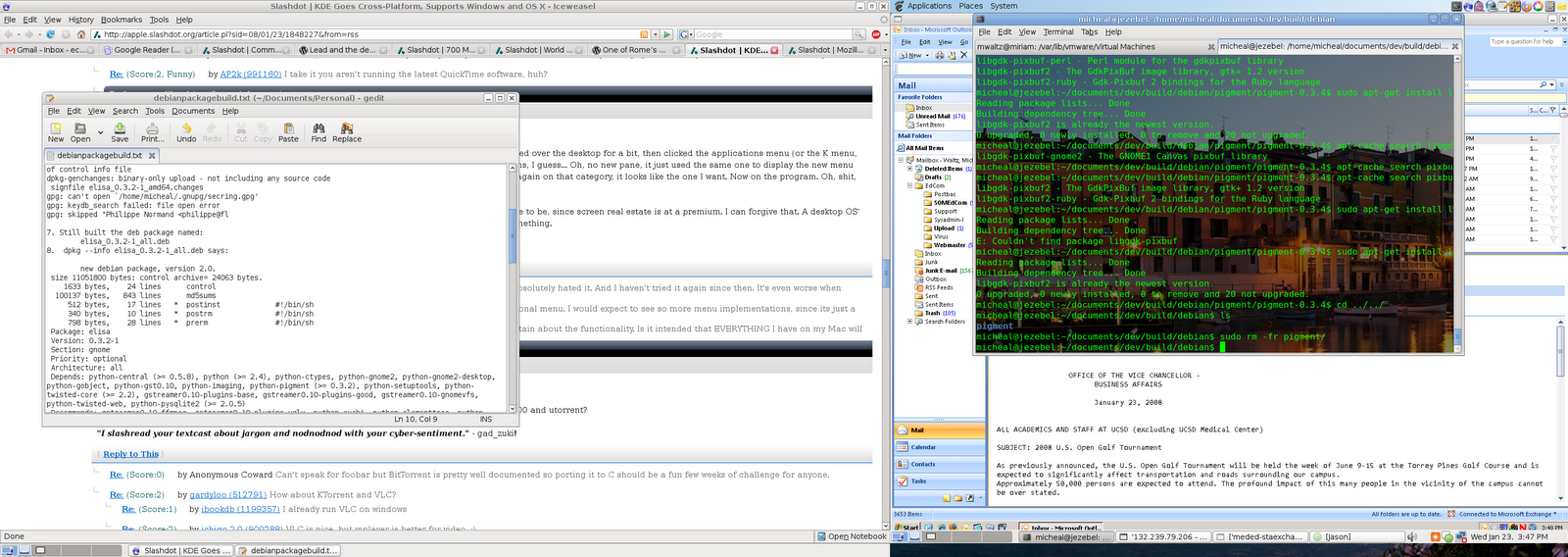Debian Work Desktop
Jan 23, 2008
[ #debian #linux #blogger ]

This is my new Debian Unstable work desktop running GNOME on a Dell Optiplex 755 Intel Core Duo Quad with 4Gb of memory.
Getting it up and running wasn't as smooth as I first expected. First, due to the strangeness of the on-board Intel non-analog DVI connector, I put the dual-head ATI Radeon I was using on my old desktop. Because I have one wide screen and one standard LCD setting the resolutions was tricky, and I finally gave up on the ATI flglx driver after I discovered it couldn't do 1600x1050. It also caused weird corruption in the lower right hand of the screen and major stability issues. moving to the open source ATI driver and a combination of Xrandr I was able to setup each monitor properly and get them working as a "Big Desktop". Originally the on-board gigabit ethernet didn't have support in the kernel, and I used a common 10/100 PCI card, the latest 2.6.24 kernel added the e1000e module which took care of that.
Performance wise it's a beast, at first it was sluggish due to the AHCI and NCQ enabled on the hard-disk, but disabling it in BIOS solved that problem. The quad-cores absolutely scream, and it's a huge improvement over the original Vista install. In order to run our more MS specific apps (IE, Outlook, SQL Manager, Cisco), I installed the free Vmware server and setup a Windows XP virtual machine with 2gigs or memory and 2 processors. Enabling remote desktop and then logging in via the terminal server client makes it seem like Outlook is it's own "app". Native Debian apps I'm using are are mostly GNOME centric: Iceweasel (aka Firefox), GNOME Terminal, Gedit, Rhythmbox, Pidgin, Picasa, and a variety of other GNU programs.
Once I got everything up and running using the desktop has been a dream. Using GNOME as a desktop manager works wonders, since I can place menu bars in any location with any number of apps that I'd like to use. Creating a "quick launch" section on the menus is also nice, since before I was using a multi-media keyboard to launch my common apps in an attempt to slim down the memory footprint of Windows. Other benefits are the copy/paste highlight/click functionality and sloppy window focus, which makes using multiple monitors more intuitive.
Overall I'm glad I spent the extra time getting Debian running on this new desktop, since it makes my workstation a lot more usable and I feel I can garner more out of this new machine that I would have with Vista.